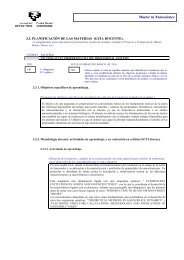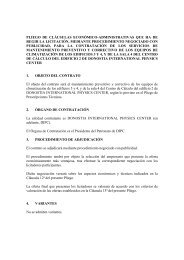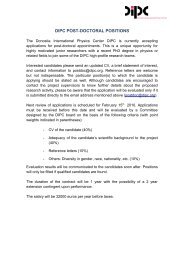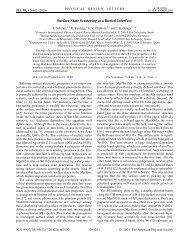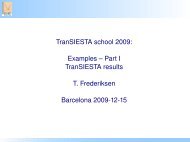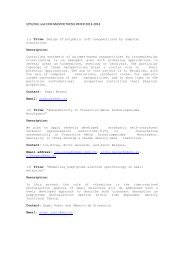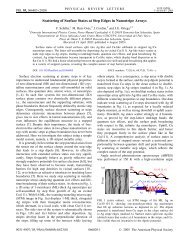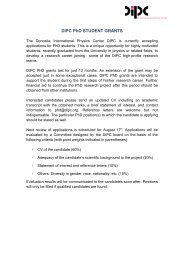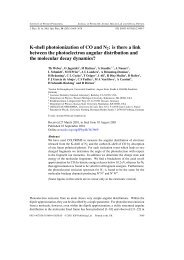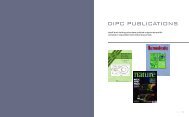Dynamic properties in aluminum filled PMMA
Dynamic properties in aluminum filled PMMA
Dynamic properties in aluminum filled PMMA
You also want an ePaper? Increase the reach of your titles
YUMPU automatically turns print PDFs into web optimized ePapers that Google loves.
1498 S. Cerveny et al./Polymer 40 (1999) 1495–1500<br />
Fig. 2. cont<strong>in</strong>ued<br />
An <strong>in</strong>terest<strong>in</strong>g po<strong>in</strong>t to be discussed refers to the filler<br />
percentage dependence of the b relaxation temperature. In<br />
Table 1 it can be seen that T b is not related to f. Accord<strong>in</strong>g<br />
to Heijboer [13], the location of the b maximum <strong>in</strong> <strong>PMMA</strong><br />
is determ<strong>in</strong>ed by the local <strong>in</strong>tramolecular barrier. The fact<br />
that this temperature does not change with the alum<strong>in</strong>um<br />
percentage leads us to the idea that the <strong>in</strong>tramolecular barrier<br />
could not be affected by the filler. However it must be<br />
mentioned that modifications <strong>in</strong> the <strong>in</strong>tensity of the b peak<br />
can be observed <strong>in</strong> Fig. 4.<br />
As is known, the b relaxation <strong>in</strong> <strong>PMMA</strong> is associated with<br />
the partial rotation of the ester group (COOCH 3 ) about the<br />
C–C bond l<strong>in</strong>k<strong>in</strong>g of the ma<strong>in</strong> cha<strong>in</strong> [13], and the <strong>in</strong>tensity<br />
of this relaxation depends on the number of lateral groups<br />
for which the rotation is possible.<br />
The <strong>in</strong>tensity of the b relaxation, I b , is <strong>in</strong>fluenced by the a



